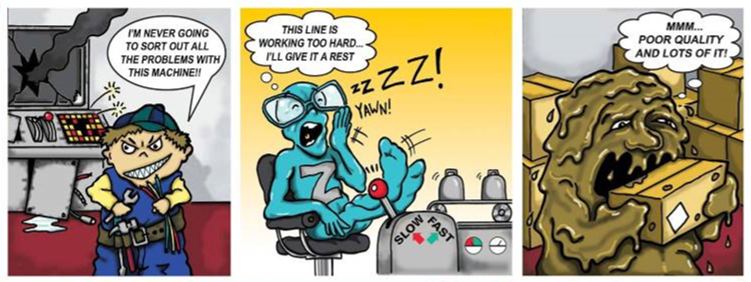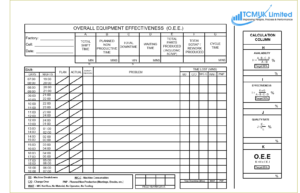Recently I started a discussion regarding SMEs and their websites, the discussion started with this quote “an interesting observation this week whilst working, how many SMEs lack an all singing all dancing website. What’s the reason, with 90+% of people now looking on line this should be a priority.” Now all singing all dancing to me means bringing a Return on Investment. Here some excellent extracts and comments from the people involved, I’ve tried to get a balance within the discussion, and this is not my area of expertise.
Ashley Pearce: “In research I conducted recently an overwhelming number of those involved with Business Development in the UK Manufacturing Sector didn’t understand the actual function of a website.
Where does it fit in? Is it just a standalone item? Is it our “Digital shopfront“? Is it relevant in our industry?
These were common questions that we arrived at after a short discussion with most. It’s what inspired a number of articles explaining the “System of Modern Sales & Marketing” over on the Manufacturing Network UK Blog.
Fundamentally a Website is often NOT, but SHOULD be seen as, “Part of a System” for attracting, nurturing and converting leads into customers. Can you see the many ways your website & web presence CAN contribute to the system?”
Ashley Pearce: “For me, the most effective way to explain how a website “Fits in” has been to direct them towards the subject of “Inbound Marketing” – with FAIR WARNING. As we say over on the Manufacturing Network Blog almost weekly, “Wear Your Manufacturing Industry Blinkers” when reading anything about marketing your business online.
Most of the information, content and articles out there explaining how it works is NOT written for you, the UK Manufacturer. I think this is why an Integrated approach to Online Marketing and Offline Sales for UK Manufacturing has been very slow to evolve. Lack of “Context” – Explained in the UK Manufacturing Industry context, we may start to see some savvy marketers leaping ahead of the competition”
Garry Taylor: “There is a feeling that unless you can get on the first 2 pages of Google there’s no Point having a Web page. as we don’t actually do sales transactions over the Internet we view as an online brochure with the blog giving any up to date info and an opportunity for feedback plus, small companies are being pushed to pay per click. Everyone knows most people clicking on your sight are not buying so you pay for nothing.”
Richard Stinson: “I spent many years in the engineering sector, from toolmaker to technical sales and I had the privilege of working directly and indirectly with many SME’s as well as the giants like Rolls and BAE. I came to realise quite quickly that the big boys have regular web trawls looking for potential suppliers, just in case their current suppliers let them down or become swamped with work. They literally have a file of reserve suppliers on their list found online. The moral of this story is that unless the SME’s had an effective web presence they were overlooked for many of these lucrative contracts.”
Alan Kent: “Whilst I can appreciate that having a web site might bring you some business, not having one will definitely bring you none. I do feel that it is becoming a bit BS5750-ish though as having a fancy web site costs money that many SMEs would rather channel into capital equipment or a decent salesman who will definitely generate revenues. I can recall putting in a lot of effort into attaining BS5750 in the 1990s which cost a lot of time and money and brought in no sales leads whatsoever. At the time no-one had realised that it was simply a way of showing that you had a process and was never expected to generate leads but without it, you would definitely get no leads.”
Chris Davis: “There are loads of things you can do here. Small web site intelligently constructed .. put stuff on eBay and Amazon have a blog use social media .. Wiki presence .. the list goes on but none of these are difficult or really expensive. It’s not an option to not have a cyber presence?”
Jeremy Wisner: “The topic concerns the need for an ‘All singing/dancing’ website. For many SMEs, operating in specialist niches, it is questionable about the return on such a site. Absolutely, a solid and informative web presence is a must (largely for contact information and credibility). However, it is in the nature of many niche-SMEs that they will know who their potential customers are and will be cultivating B2B relationships via more direct approaches, rather than hoping to WOW website visitors. Niche products and services, by nature, often require specialised knowledge to explain to USP to potential buyers. Of course, retail is a whole different discussion.
90%+ will look online, yes. However, I’d argue that for the niche players, the hard yards have already been covered by the ‘song and dance’ created offline – backed up by effective SEO work – which again strengthens credibility.”
Adam Payne: “Disagree with you Jeremy, when I look at the SMEs including two that we were looking to acquire in a niche market, had limited website presence and no sales and marketing function, relying on word of mouth and guess how they were performing. If you are looking to expand your business you need an online presence, again as an example, recently I was supporting a company to try and source stretch forming, the search was not easy due to again lack of online presence and SEO setup, I ‘m sure to god there are businesses in the UK, but they missed a big opportunity. Now this is not my area, but if you are happy as a business then you stay as you are, but rest assured someone will be around the corner waiting to pounce if you are not bringing in customers, if you are looking to expand you need multiple marketing pillars and a top website is one of those with an inbound marketing approach (blog showing expertise, contact form with call to action, etc).”
Ashley Pearce: “This discussion thread has done a great deal in exposing the core beliefs that sit behind the reason / purpose / ultimate aim behind a website for a B2B Sales focused business.
The purpose of a website for B2C or retail is completely different. The website can have more to do with sales and sales fulfillment than it can with building the confidence of a prospect and developing a relationship.
Just because they look the same on the outside and are accessed via a web browser does not mean they are the “same thing”.
Fact 1: You are not going to receive sales through your company website in the manufacturing industry. You’re not selling products, you’re selling capability.
Fact 2: Buyers do their searching a researching online before EVER reaching out and asking for information, requesting a quote or expressing interest.
Lesson: If your website doesn’t start a conversation with the Buyers and Engineers visiting it, you will be overlooked…”











